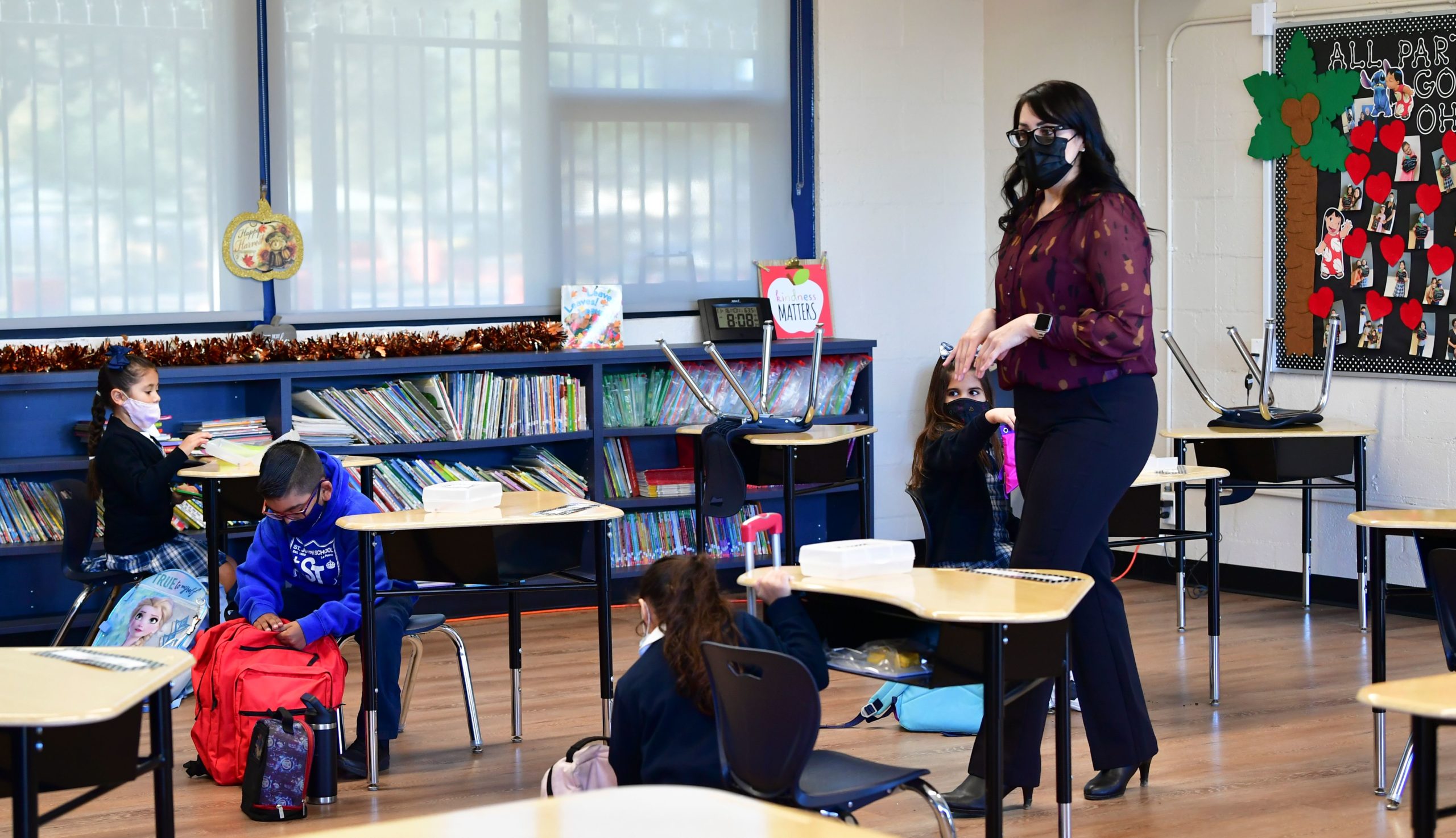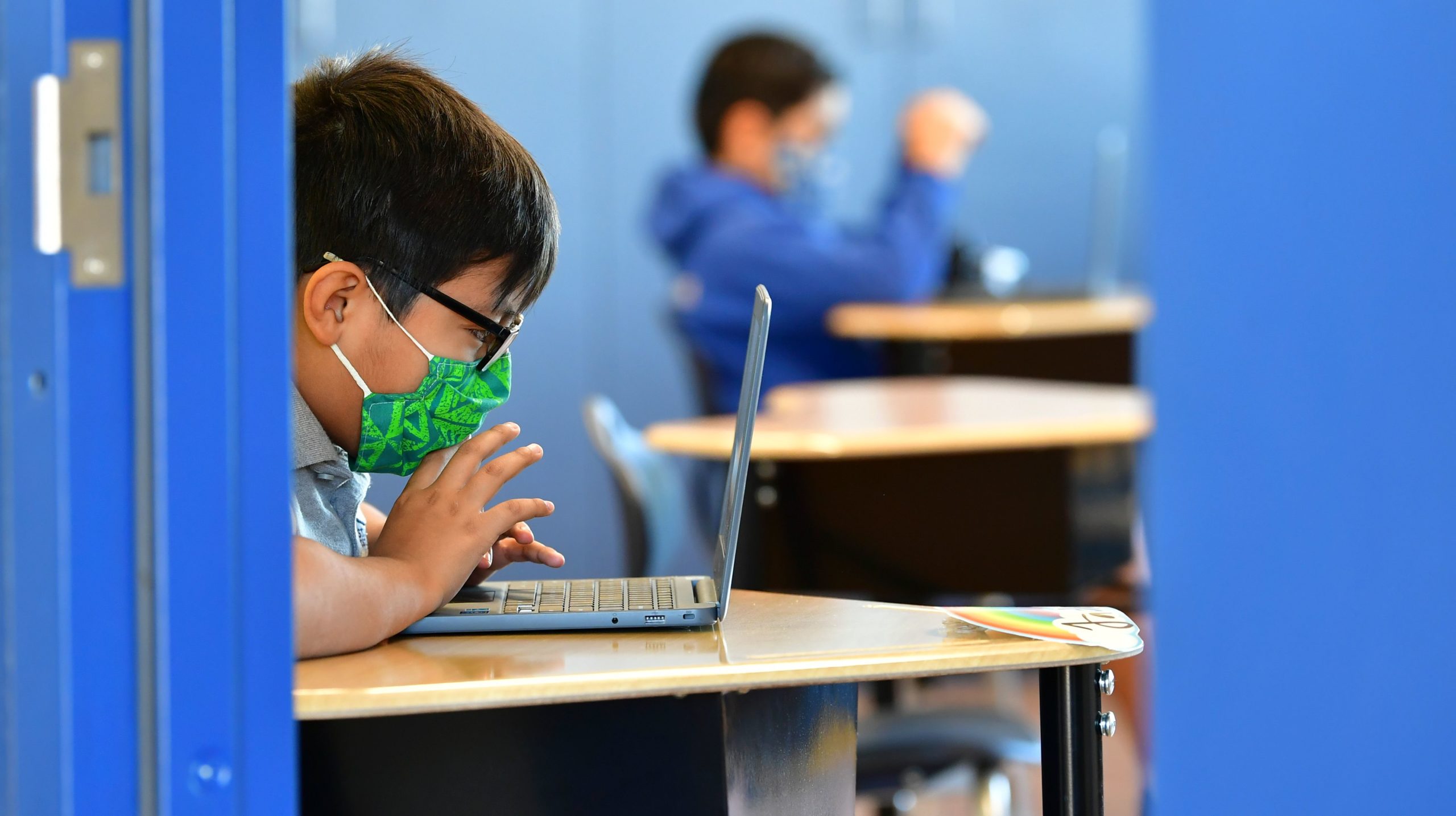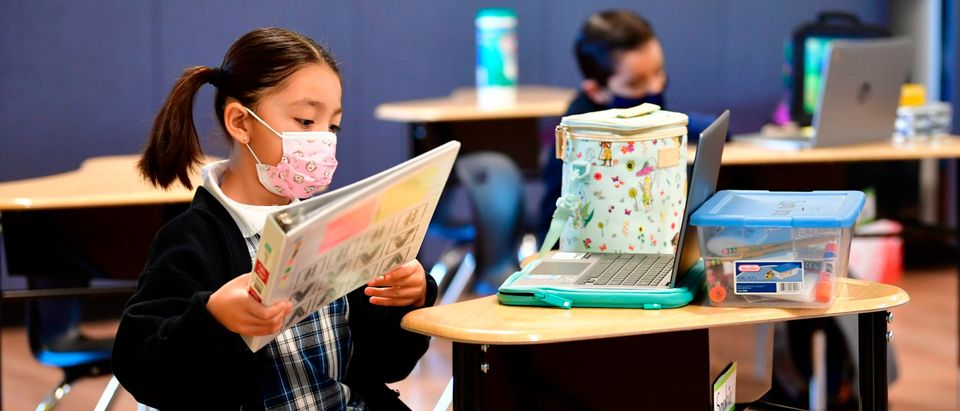Parents are pulling their children out of the public school system across the country, sending a message to districts that prolonging remote learning is costing them students.
In Washington, D.C., northern Virginia and Maryland, thousands of children are leaving public schools, the Washington Post reported. Potentially $42 million is at stake in Montgomery County and $35 million in Prince George’s County, since funding is tied to student enrollment.
In Wisconsin, a study showed that 34 districts that started the school year with virtual learning saw a 3% decrease in enrollment, while the state’s school enrollment declined 2.67%. Private school choice programs grew by more than 2,700 students as public schools saw declines of 36,000.
Corey DeAngelis, an adjunct scholar at the Cato Institute’s Center for Educational Freedom and the Director of School Choice at the Reason Foundation, says these trends are appearing across the country as parents seek out alternatives for their children after months of virtual learning.
“Families are getting a bad deal and they know it,” he told the Daily Caller. “That’s why they’re fleeing the public school system in droves and why support for school choice is skyrocketing.”

First grade instructor Laura Sanchez speaks to her returning students at St. Joseph Catholic School in La Puente, California on November 16, 2020. (Photo by FREDERIC J. BROWN/AFP via Getty Images)
Many students are having trouble adapting to the new education setting, and the abrupt switch is reflected in performance. The Fairfax County Public Schools released a report in November showing that the number of middle and high school students failing two or more classes increased by 83%.
Parents not satisfied with their district’s approach to learning during the pandemic have opted for private schools and homeschools instead. More than 8,700 students in the Fairfax County school system were withdrawn, marking a 5% enrollment decrease, the Post reported.
DeAngelis says that there has always been an uneven power dynamic between families and the public school system, but the pandemic “put a spotlight on it,” and it has also emphasized class divisions.
While families with the means to send their children to private schools may have chosen to do so instead of depending on the public school system, low-income households may not have that option. DeAngelis claims that the solution is investing in students instead of institutions to ensure that children from low-income households have access to alternatives.
“Families are waking up to the reality that there isn’t any good reason to fund institutions when we can fund students directly instead,” he said. “Well-off families already have the resources to seek out in-person alternatives to the public school system. The best solution to this problem is to fund students directly so more families could be empowered to access these alternatives.”
In many cases, as private school systems across the country have reopened, local public schools have remained closed or in a limbo between in-person learning and remote learning. Across the country, roughly 85% of Catholic schools planned in the summer to go forward with reopening for in-person learning, the vast majority for four and a half to five days per week, the Post Gazette reported.
Many public school districts have grappled with meeting the demands of teachers unions in order to reopen. In Washington, D.C., the city’s teachers union rejected an agreement with the public school system to reopen campuses in November.
The Washington Teachers’ Union has lobbied for a provision to a tentative agreement reached a week prior that delineated the condition for returning to in-person learning. The provision would allow teachers to opt out of in-person teaching, according to DCist, but the school system did not support it.
“Private businesses including schools and daycares have been fighting to reopen. Some private schools in Kentucky are even taking the fight to the U.S. Supreme Court,” he said. “But so many public schools and teachers unions are fighting to remain closed.”
Data accumulated globally has shown that infections did not surge when schools reopened. Even when community transmission was high, coronavirus outbreaks in schools were still uncommon especially if precautions were in place, according to Nature. (RELATED: Dr. Fauci Said To Reopen Schools, And Close Bars — But Major School Districts Continue To Stay Closed)

Students work on their laptop computers at St. Joseph Catholic School in La Puente, California on November 16, 2020. (Photo by FREDERIC J. BROWN/AFP via Getty Images)
DeAngelis says the difference between public and private schooling is a matter of incentives. If a grocery store doesn’t reopen, people can decide to take their money elsewhere. In education, he believes the dynamic should be similar — if public schools aren’t providing satisfactory learning experiences for students, parents should be equipped with the funding to enroll their child in a different school.
“Education funding is supposed to be meant for educating children, not for protecting a government monopoly.”


